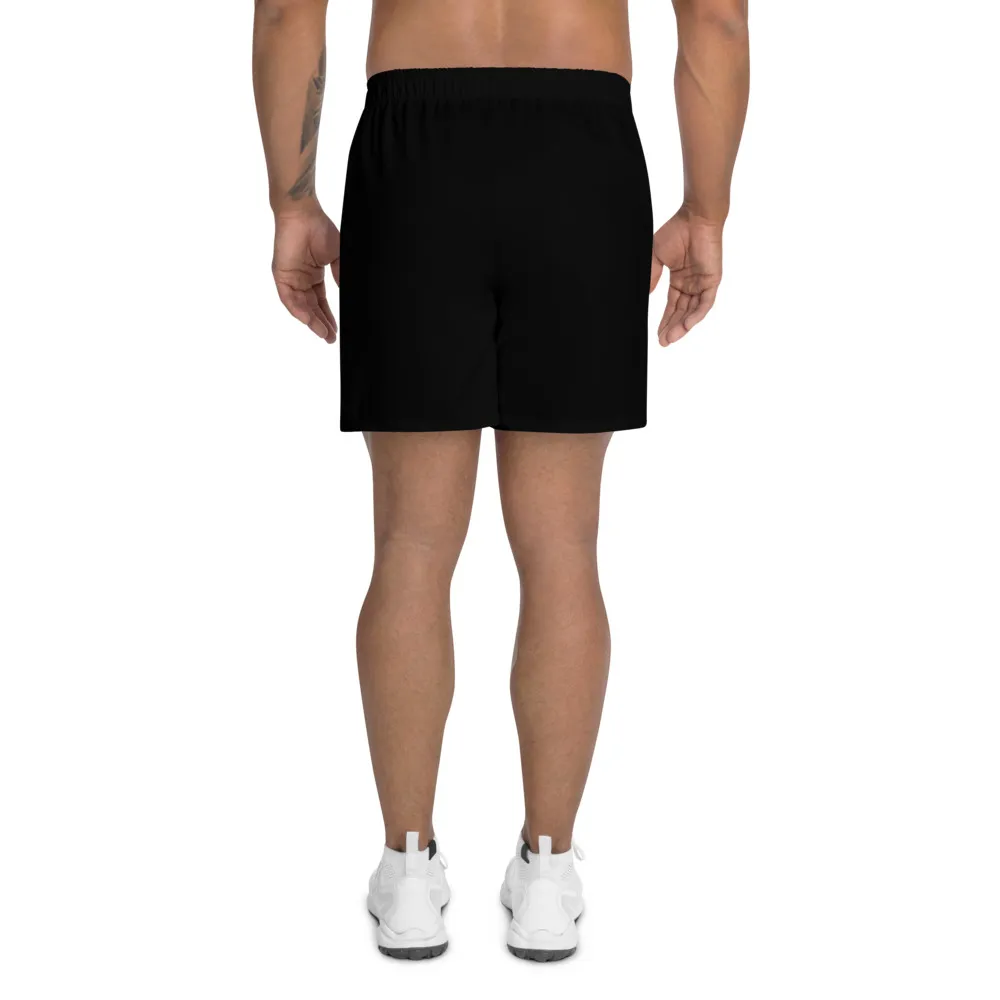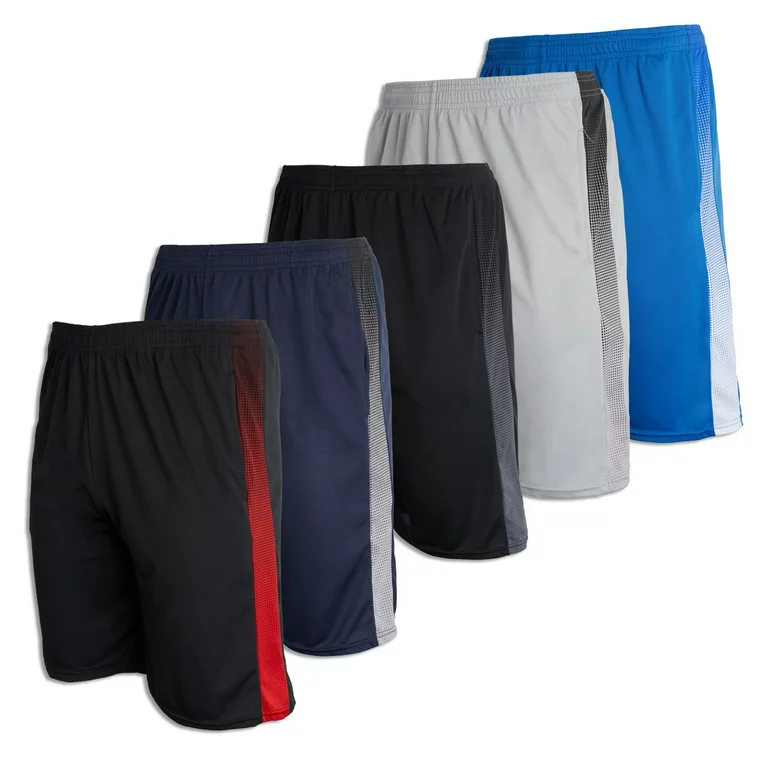For any active man, a good pair of athletic shorts is essential. Whether you’re hitting the gym, pounding the pavement, or just lounging around in comfort, the right shorts can make all the difference. But with so many options on the market, choosing the perfect pair can be overwhelming.
This guide will equip you with the knowledge you need to find the ideal men’s athletic shorts for your needs. We’ll delve into different styles, materials, features, and considerations to ensure you get the best fit and performance.
Styles of Men’s Athletic Shorts
First, let’s explore the various styles of men’s athletic shorts available:
-
Running Shorts: Designed for maximum breathability and freedom of movement, running shorts are typically short and lightweight. They often feature a built-in liner for added comfort and support.
-
Training Shorts: Offering a slightly longer inseam than running shorts, training shorts provide more coverage while still maintaining mobility. They’re ideal for a variety of workouts, from weightlifting to HIIT classes.
-
Basketball Shorts: Traditionally loose-fitting and reaching mid-thigh, basketball shorts prioritize comfort and range of motion for on-court activities.
-
Compression Shorts: These tight-fitting shorts hug your legs, promoting blood flow and reducing muscle fatigue. They’re often worn as a base layer for added support during intense workouts.
-
Hybrid Shorts: Combining elements of different styles, hybrid shorts offer versatility for various activities. For instance, some may have the breathability of running shorts with the slightly longer length of training shorts.
Material Matters: Choosing the Right Fabric
The material of your athletic shorts significantly impacts comfort, performance, and durability. Here’s a breakdown of some popular choices:
-
Polyester: A synthetic fabric known for its moisture-wicking properties, keeping you cool and dry during exercise.
-
Nylon: Another synthetic material offering durability and quick-drying capabilities.
-
Spandex: Often blended with other fabrics, spandex provides stretch and flexibility for unrestricted movement.
-
Cotton: While comfortable for casual wear, cotton absorbs sweat and can become heavy during exercise. However, some cotton blends offer improved moisture management.
Beyond the main fabric, consider additional features:
-
Lining: A built-in liner can provide extra comfort and support, especially for longer runs or high-impact workouts.
-
Mesh Panels: Strategically placed mesh panels enhance breathability in sweat-prone areas.
-
Pockets: Opt for shorts with pockets if you need to carry essentials like keys or a phone. However, ensure the pockets don’t bounce excessively during exercise.
Features to Enhance Your Workout Experience
Several features can further elevate your athletic shorts:
-
Waistband: Look for a comfortable and secure waistband that won’t dig into your skin. Drawstrings allow for adjustability and a personalized fit.
-
Reflective Details: If you’re running or exercising in low-light conditions, reflective details can enhance your visibility.
-
Flatlock Seams: Flatlock seams minimize chafing and irritation, especially important during long workouts.
Choosing the Perfect Fit: Length, Inseam, and Mobility
Fit is paramount for comfort and performance. Here’s what to consider:
-
Length: Choose a length that allows for unrestricted movement during your chosen activity. Running shorts tend to be shorter, while training shorts offer more coverage.
-
Inseam: The inseam is the distance from the crotch seam to the bottom of the leg opening. Common inseam lengths for athletic shorts range from 5 inches to 10 inches.
-
Mobility: Ensure the shorts allow for a full range of motion without feeling restrictive. Try squatting, lunging, and raising your arms to assess mobility.
Beyond Performance: Considerations for Everyday Wear
While performance is key, consider these additional factors if you plan to wear your athletic shorts for casual activities:
-
Style: Athletic shorts come in various colors, patterns, and designs. Choose a style that complements your personal taste.
-
Versatility: Opt for a versatile pair that can be worn for both workouts and casual outings. Look for neutral colors or classic styles.
Caring for Your Athletic Shorts
Proper care extends the lifespan of your athletic shorts. Here are some tips:
- Follow the care label instructions.
- Wash in cold water with similar colors.
- Use a gentle detergent.
- Air dry whenever possible.
Tips to prevent shrinkage or fabric damage
Here are some key tips to prevent shrinkage or fabric damage in your favorite men’s athletic shorts:
-
Always check the care label: This is the golden rule! Every garment has a care label with specific washing and drying instructions. Following these guidelines is the best way to ensure your shorts stay in top shape.
-
Embrace cold water washing: Hot water can be a culprit behind shrinkage. Opt for cold water washes whenever possible. Cold water is gentler on fabrics and helps retain their shape.
-
Skip the harsh detergents: Strong detergents can break down fabric fibers over time, potentially leading to tears or premature wear. Choose a gentle detergent designed for athletic wear.
-
Air drying is king: Heat is another enemy of fabric. Whenever possible, air dry your athletic shorts. Hang them on a drying rack or clothesline in a well-ventilated area. This not only prevents shrinkage but also preserves the elasticity of fabrics like spandex.
-
Tumble dry low (if necessary): If air drying isn’t an option, use the dryer on a low heat setting. This minimizes the risk of shrinkage compared to high heat settings.
-
Avoid overloading the dryer: Cramming too many clothes in the dryer restricts airflow and traps heat, leading to potential shrinkage. Stick to a moderate load to ensure proper drying.
-
Turn them inside out: Washing and drying your shorts inside out can help protect the outer surface from abrasion and fading.
-
Skip the iron (for most fabrics): Many athletic fabrics are wrinkle-resistant and don’t require ironing. Excessive heat from ironing can damage delicate fibers. If ironing is absolutely necessary, use a low heat setting and turn the shorts inside out.
By following these simple tips, you can significantly reduce the risk of shrinkage or fabric damage in your men’s athletic shorts, keeping them looking and performing their best for longer.

Folding or hanging options
When it comes to athletic shorts, folding is generally the preferred method for storage. Here’s why:
-
Reduces wrinkles: Athletic shorts are typically made from wrinkle-resistant materials like polyester or nylon. However, hanging them for extended periods can cause slight creases, especially along fold lines. Folding minimizes this risk.
-
Saves space: Compared to hanging, folded athletic shorts take up less space in drawers or shelves. This is especially beneficial if you have limited closet space.
-
Protects delicate features: Some athletic shorts have features like mesh panels or reflective details. Folding them helps prevent these elements from snagging or getting damaged on hangers.
However, there can be situations where hanging might be preferable:
- Limited drawer space: If your drawers are already overflowing, hanging your athletic shorts can free up space.
- Want to maintain a crisp look: If you plan to wear your athletic shorts soon and want them to look wrinkle-free, hanging them can be a quick solution.
- Drying after washing: Hanging freshly washed athletic shorts allows for better air circulation and faster drying.
Ultimately, the choice between folding or hanging your athletic shorts depends on your storage space, personal preference, and how soon you plan to wear them.
Conclusion: Finding the Perfect Pair
With the knowledge you’ve gained, you’re well on your way to finding the perfect pair of men’s athletic shorts. Consider your activity level, desired features, and personal preferences to make an informed decision. Remember, the right shorts will not only enhance your performance but also keep you comfortable throughout your workout journey.






